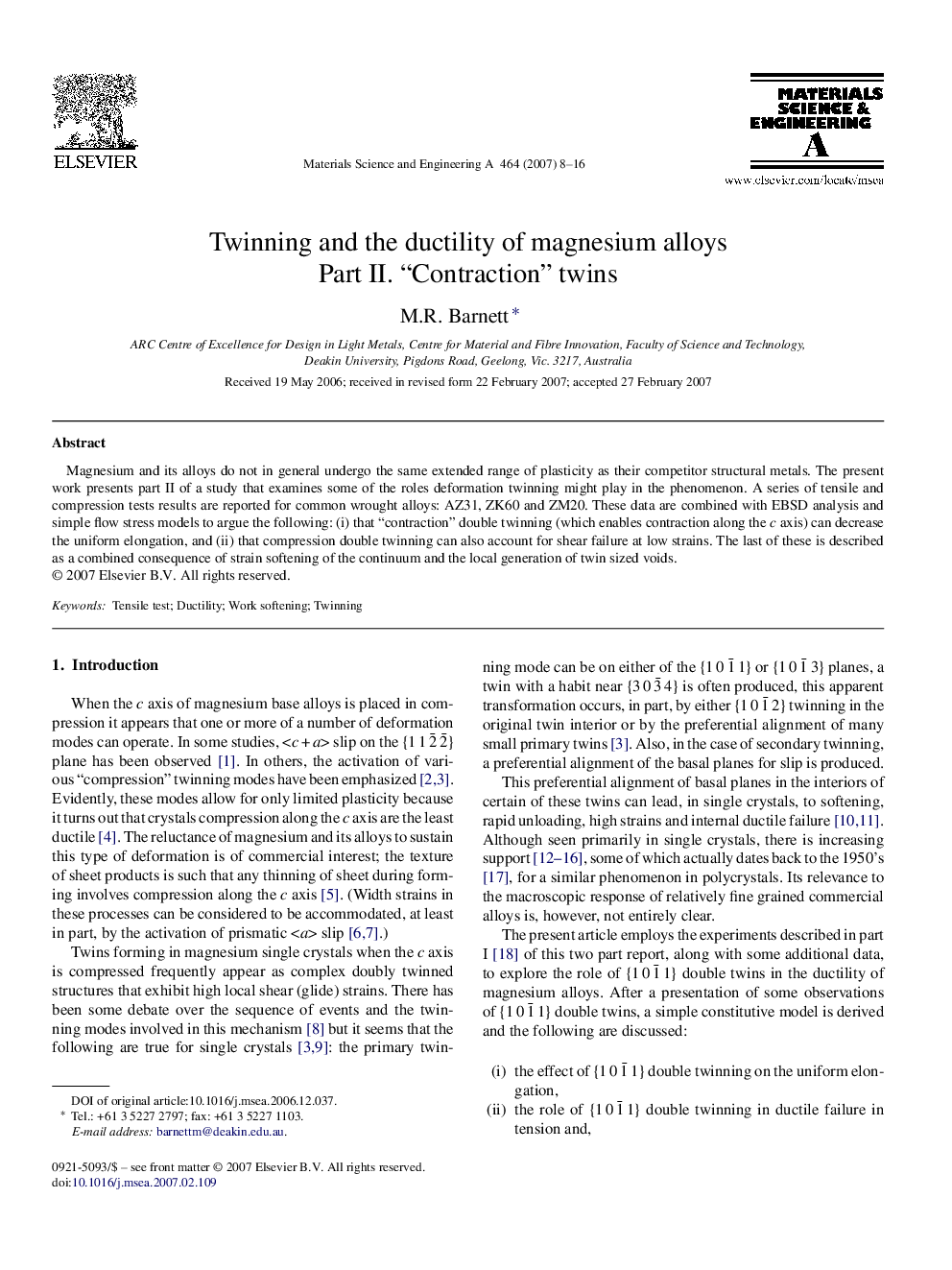| Article ID | Journal | Published Year | Pages | File Type |
|---|---|---|---|---|
| 1583677 | Materials Science and Engineering: A | 2007 | 9 Pages |
Abstract
Magnesium and its alloys do not in general undergo the same extended range of plasticity as their competitor structural metals. The present work presents part II of a study that examines some of the roles deformation twinning might play in the phenomenon. A series of tensile and compression tests results are reported for common wrought alloys: AZ31, ZK60 and ZM20. These data are combined with EBSD analysis and simple flow stress models to argue the following: (i) that “contraction” double twinning (which enables contraction along the c axis) can decrease the uniform elongation, and (ii) that compression double twinning can also account for shear failure at low strains. The last of these is described as a combined consequence of strain softening of the continuum and the local generation of twin sized voids.
Related Topics
Physical Sciences and Engineering
Materials Science
Materials Science (General)
Authors
M.R. Barnett,
